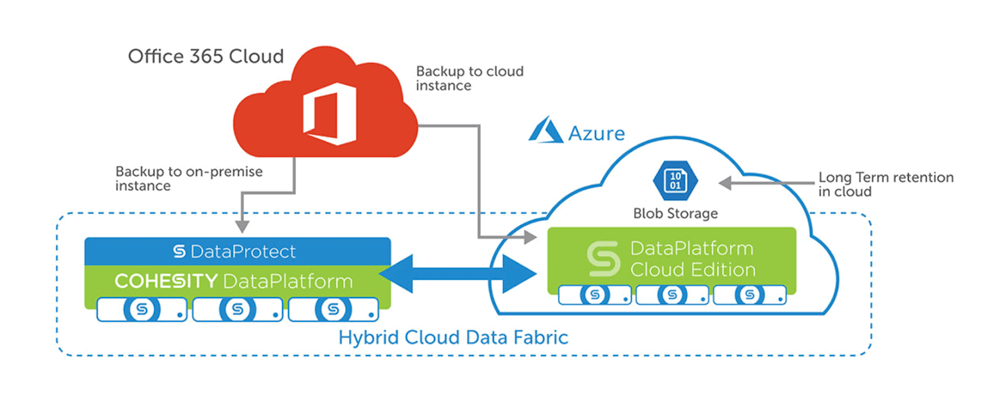We all use smartphones so often they have become an integral part of our daily lives. In fact, a recent study looked at the population of 52 countries and found that this year, 66% of individuals will own a smartphone, up from 63% in last year, and 58% in 2016. Did you ever wonder why smartphone adoption went through the roof in the last decade? One obvious reason – smartphones dramatically simplified our lives by eliminating the need to carry multiple point products such as a phone, camera, PDA (if you remember what that was), GPS, etc. by combining everything in one small-but-mighty device.
Similar to the smartphone, Cohesity has dramatically simplified how enterprises now manage their secondary, non-mission critical data. Instead of relying on multiple point products, and maintaining as many as 8 to 12 copies of the same data, enterprises using Cohesity now consolidate their backup and recovery, files and objects, test/dev, and analytics data on a single software-defined solution, Cohesity DataPlatform.
To continue disrupting the status quo, we are thrilled to announce general availability of Cohesity Pegasus 6.1, our latest software release for Cohesity DataPlatform and DataProtect.
So let’s see what makes Pegasus 6.1 another powerful software release, starting with new capabilities for Service Providers:
- Whether you are a larger organization with multiple departments or a service provider, Pegasus 6.1 allows you to efficiently manage different departments/tenants with secure multi-tenancy, tenant self-service, and more on a shared environment. This all happens while Cohesity does the job of simplifying operations, reducing cost, and securely managing secondary data and applications.
- In addition, the Pegasus 6.1 release enables data protection of VMware vCloud Director (vCD) (beta) environments onto Cohesity clusters. The vCD objects – organizations, virtual data centers (vDC’s), vApps, and VMs — can now be backed up, and vApps and VMs can be instantly restored to the original or alternate locations. Click here to get more details on these new capabilities.
New Data Protection features/capabilities
- Support for WORM (Write Once Read Many) backups that enables security officers to create and apply a “Datalock” policy to selected jobs and achieve a higher order of immutability for protected data and thus ability to meet compliance requirements. The data-locked snapshots behave the same as if they were backed up to a WORM storage. This feature integrates with RBAC, eliminating the need for third-party tools.
- Pre- and Post-scripts for backup jobs that simplify the workflow by allowing backup administrators to run pre-defined scripts prior to the start of, and after the completion of, a backup job; all actions are part of the same process.
- Flexible, fast, and granular Oracle database restore with point-in-time-restore. What is important to note here is that now database admins can restore their Oracle database to a point in time between two snapshots, giving a greater level of flexibility and control.
- Protection for folders or complete volumes on Windows 2012 R2 and above hosts via file-based workflow.
- Further enhancements to NAS protection with Automated NAS Volume Restores directly from Cohesity UI.
Protecting SaaS, starting with O365 Exchange Online
As Office 365 Exchange Online continues to see strong adoption within organizations, the need for an enterprise-grade data protection solution has become increasingly critical. Native capabilities within O365 and other third-party solutions do not fully meet compliance and retention needs.
With Cohesity DataProtect’s new support for Exchange Online (beta), customers can now search, browse, perform instant granular email recovery, and extend policy-driven comprehensive protection automatically to new mailboxes. We’re starting with Exchange Online, which will be generally available by the end of 2018.
Click here to learn more about how you can seamlessly protect and recover your O365 environment with Cohesity.
New Qualified Platforms for Cohesity
- Pegasus 6.1 gives additional flexibility by supporting Dell EMC PowerEdge servers. Customers looking to take advantage of a software-defined solution can run their Cohesity software on qualified Cisco UCS, HPE ProLiant, HPE Apollo, Dell EMC PowerEdge servers or Cohesity hyperconverged platforms.
- Additionally, to support exponential data growth, enterprises can now run Cohesity on Cisco UCS S3260 and HPE Apollo 4510 Gen 10 high-density servers to maximize data center footprint.
- And finally, we address your growing secondary data in the edge/remote office with new DataPlatform Clustered Virtual Edition.
New Cloud Capabilities
Pegasus 6.1 comes with a number of cloud capabilities across long-term retention, cloud backup, and test/dev.
- In the long-term retention area Cohesity now integrates with Azure Data Box to enable protection and seeding of large amounts of data into Azure storage. Long-term retention can now also be enabled for Amazon’s C2S cloud, available to the intelligence community. Finally, file level granular recovery is possible now from Glacier, which can help minimize egress costs from the cloud.
- To enable test/dev in the cloud, CloudSpin can convert RHEL VMs in the Azure cloud. This helps with application mobility from on-premises to the Azure format and adds to the support for VMs that already existed.
As you can see, Pegasus 6.1 is indeed a power packed release with new capabilities and enhancements across the board. We encourage you to reach out to us for more information and how we can enable your secondary data use case in a hybrid cloud environment.


















